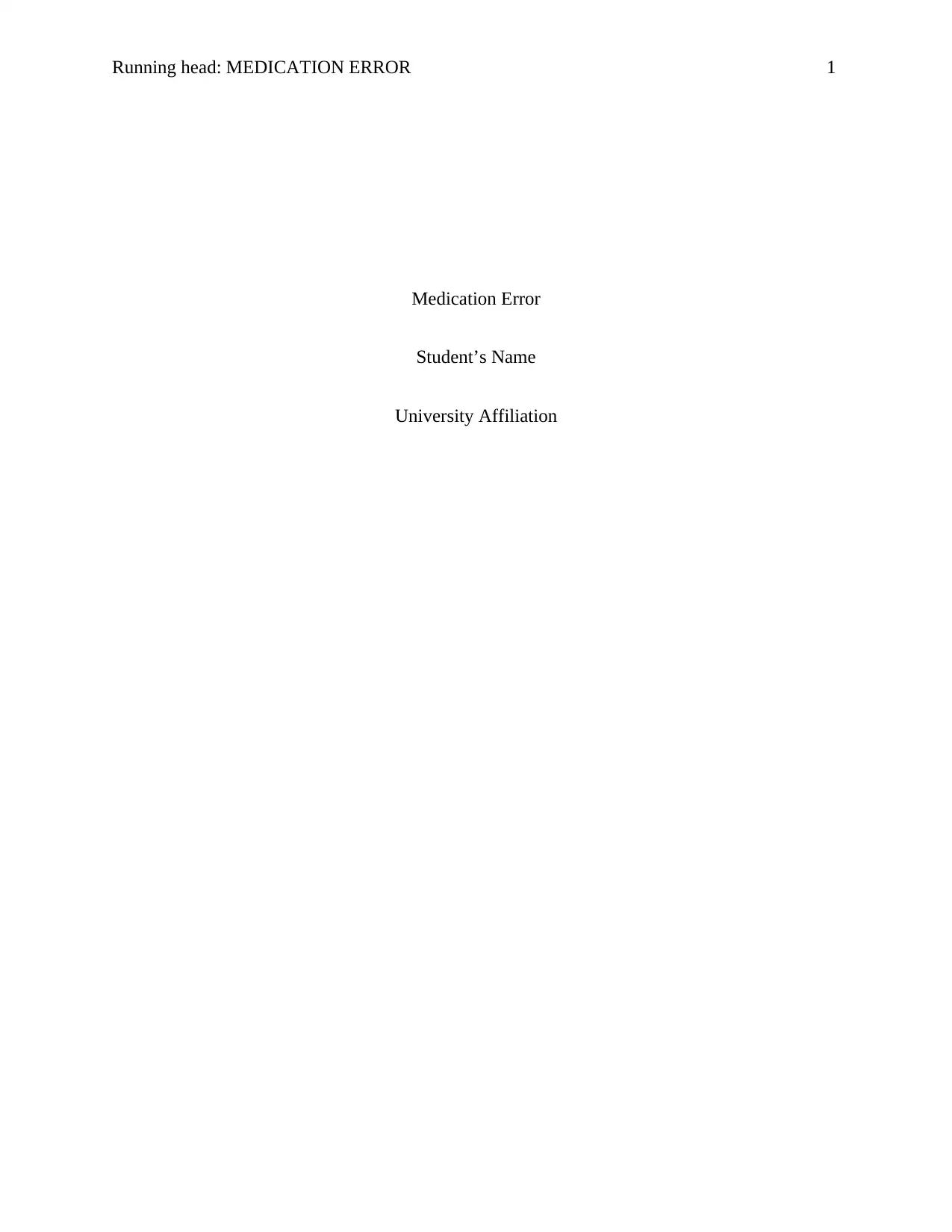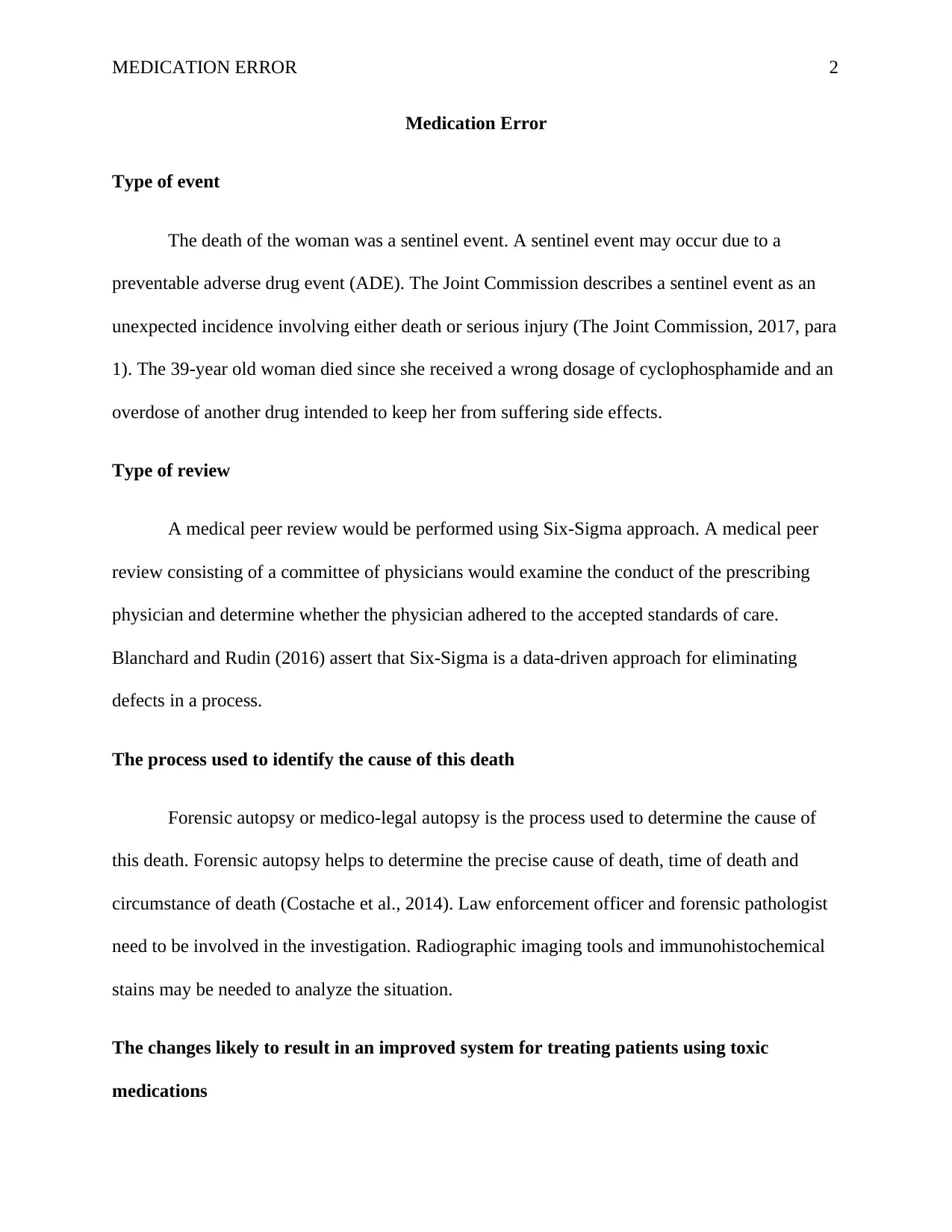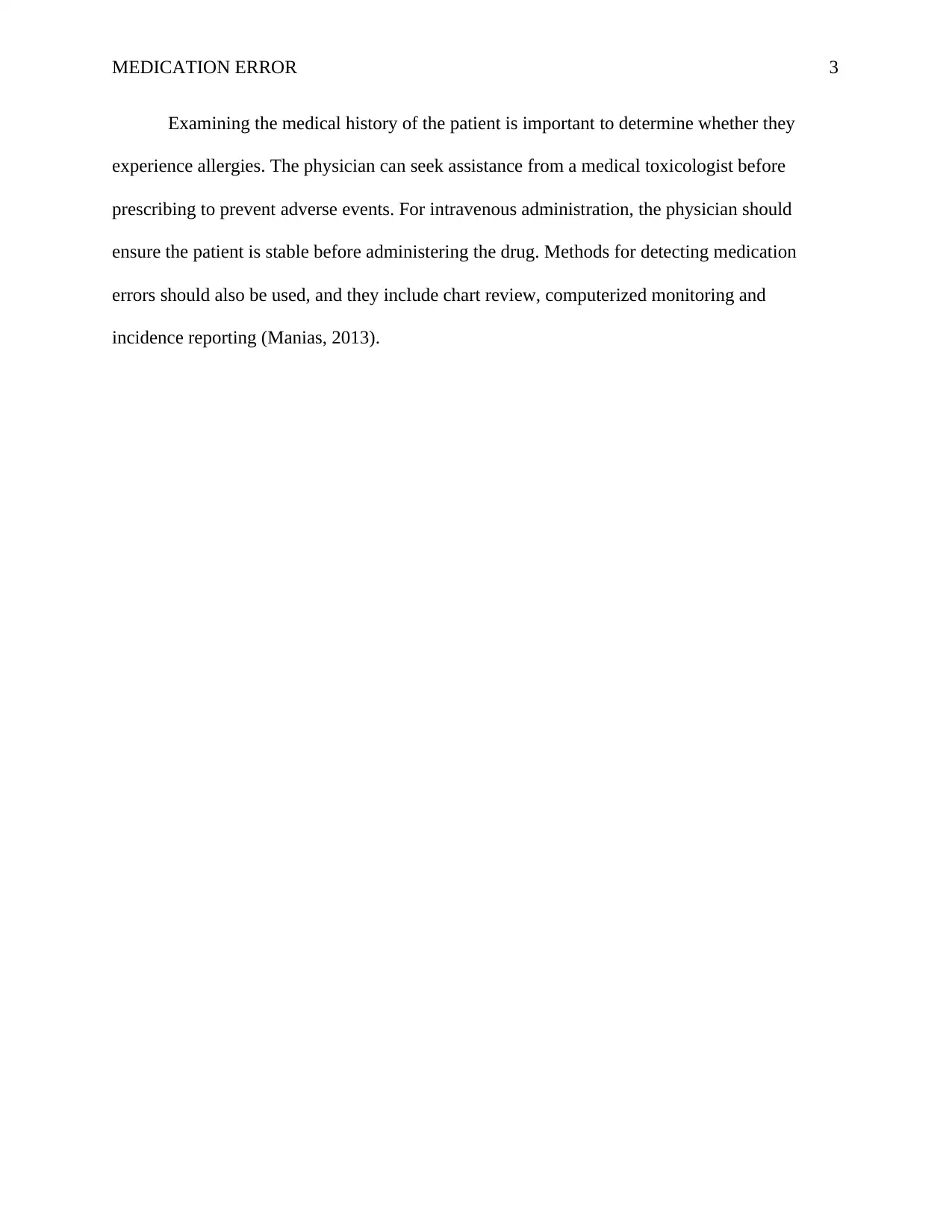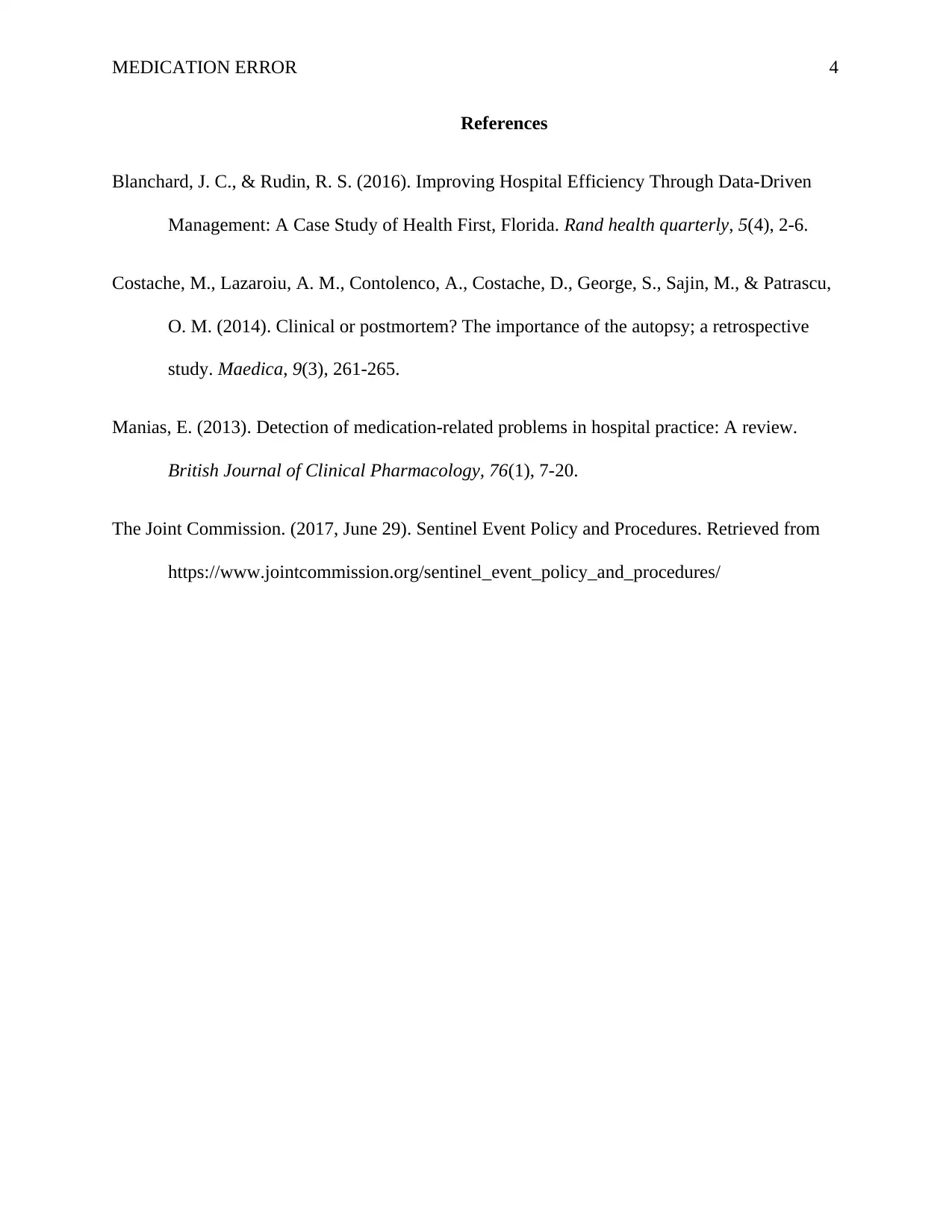Medication Error Report: A Case Study and Analysis of a Sentinel Event
VerifiedAdded on 2020/04/13
|4
|493
|32
Report
AI Summary
This report examines a medication error case, specifically a sentinel event involving a patient's death due to a wrong dosage of medication. It highlights the importance of investigating such incidents through forensic autopsies and medical peer reviews, utilizing tools like Six-Sigma to identify the root causes. The report also discusses the need for thorough patient history reviews, consultation with medical toxicologists, and the implementation of various methods for detecting medication errors, such as chart reviews and computerized monitoring. The report aims to provide insights into preventing such errors and improving patient safety in healthcare settings. This is a case study analysis of a medication error to understand the causes and possible solutions to prevent such errors in the future.
1 out of 4






![[object Object]](/_next/static/media/star-bottom.7253800d.svg)